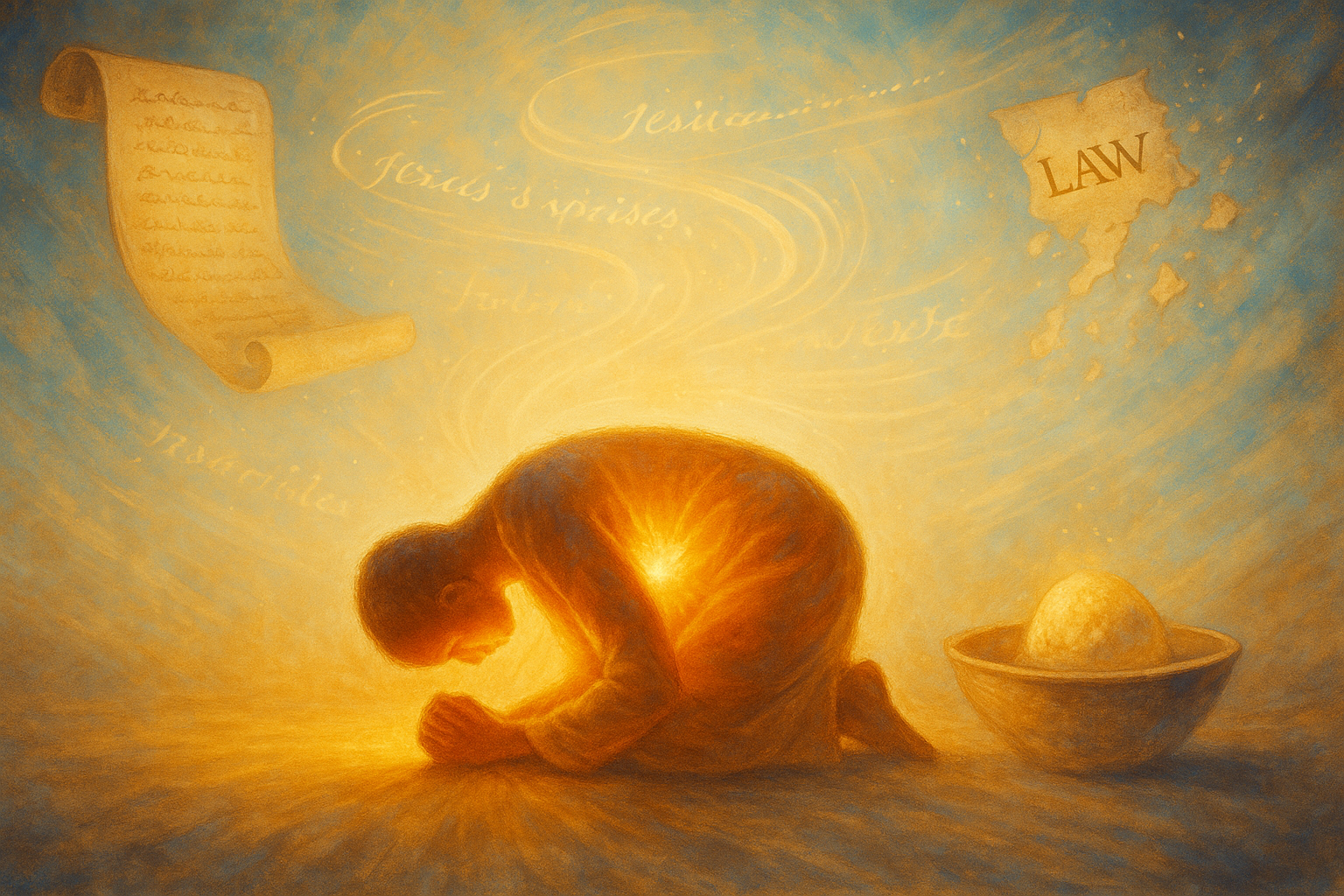The figure of Jesus stands at the heart of Christianity, yet his identity sparks endless debate: Is he the historical Hebrew minister who walked the dusty roads of first-century Palestine, or the cosmic Christ of Faith, exalted in the confessions of the Church? This tension; between a Jesus of history and a Christ of faith; has fueled centuries of scholarship, theological reflection, and spiritual inquiry. Can these two figures (for the sake of Christianity’s continuance and survival) be meaningfully separated, or are they inextricably intertwined? Drawing on some insights (Anderson, 2013; Collins, n.d.; Samuels, n.d.; Wright, 1996), this blog post explores this interesting question, inviting you to also ponder the historical, theological, and philosophical implications of the Jesus character’s dual identity.
The Historical Jesus
The quest for the historical Jesus seeks to uncover the possible man behind the myth—a figure grounded in the cultural, religious, and political realities of first-century Hellenistic Judaism. Scholars like E.P. Sanders and N.T. Wright emphasize Jesus as an eschatological prophet proclaiming the imminent arrival of God’s kingdom (Sanders, 1995, as cited in Samuels, n.d.; Wright, 1996). Far from a timeless moral teacher, Jesus was a Galilean Hebrew (Galilee is in the land of Naphtali) who challenged the Roman occupation and Jewish religious establishment with a message of radical renewal. The actions of his ministry—calling disciples, enlightening people and doctrinally challenging the Sanhedrin, and overturning tables in the Temple—marked him as a charismatic leader, a “sage” with social and political implications (Borg, as cited in Samuels, n.d.).
Adela Yarbro Collins highlights Jesus’ distinctiveness even among other prophets like John the Baptist. Unlike John’s ascetic rigor, Jesus embraced table fellowship, symbolizing his God’s inclusive love and joy (Collins, n.d.). His teachings, rooted in Hebrew Scripture, carried an unprecedented authority, leading some to see him as the Messiah during his lifetime. Yet, his crucifixion—a brutal Roman execution—challenged messianic expectations, forcing followers to reinterpret his death as part of a divine plan (Collins, n.d.).
This historical Jesus is vivid, human, and deeply Hebrew. But can he be isolated from the Greek theological figure who emerged in the wake of his death?
The Christ of Faith
The Christ of Faith is the exalted figure of Christian confession, celebrated in the Pauline epistles, Johannine theology, and church doctrine. This Christ is not scripted as being merely a historical preacher but the cosmic savior, the “second name for Jesus” in Paul’s writings, embodying salvation for the church (Kärkkäinen, as cited in Samuels, n.d.). The Gospel of John, with its high Christology, presents the Jesus character as the manifested Greek Logos, the Word (Greek Logos) made flesh, distinct from the Synoptic Gospels’ focus on his humanity (Anderson, 2013).
For theologians like Pannenberg, Christology is about grounding the church’s confession in the historical activity of Jesus, yet it transcends history (Pannenberg, as cited in Samuels, n.d.). The Christ of Faith is confessed as risen, exalted, and returning—a figure woven into the nature of Christian worship, theory, and belief. This theological construct, shaped by post-resurrection experiences and Hellenistic influences, elevates the Jesus character beyond his Hebrew or Jewish context into a universal savior.
But does this elevation erase the historical Jesus, or does it depend on him?
The Tension: Can History and Faith Be Divided?
The debate over separating the Jesus of history from the Christ of Faith is not ultimately academic—it’s a philosophical and spiritual crossroads. Individuals like David Friedrich Strauss argued for a stark divide, dismissing miracles as mythological expressions of messianic belief rather than historical events (Collins, n.d.). Strauss’ naturalistic approach sought to strip away theology to reveal a purely human Jesus, a view echoed by John Dominic Crossan, who portrays Jesus as a non-apocalyptic sage akin to a Cynic philosopher (Wright, 1996).
Yet, this dichotomy is problematic. Paul N. Anderson challenges Strauss’ rigid separation, arguing that history and theology are “inextricably entwined” (Anderson, 2013, p. 81). The Gospel of John (despite its manuscript being heavily re-written by various authors), often dismissed as purely theological, contains more mundane and archaeologically verified details (not about the Jesus character) than the Synoptics, suggesting a historical core beneath its theological veneer (Anderson, 2013). Similarly, N.T. Wright rejects the divide, proposing that Jesus’ historical actions—his Temple critique, table fellowship, and self-understanding as a messianic figure—form the foundation for early Christian theology (Wright, 1996). For Wright, linking the resurrection to the Jesus character is the pivotal event: without it, Jesus’ movement would have fizzled like other failed messianic campaigns (Wright, 1996).
The Synoptic Gospels, too, blur the line. While they seek to emphasize Jesus’ humanity, their portrayal of him as a prophet and miracle-worker carries theological weight (Samuels, n.d.). Even the historical Jesus’ apocalyptic worldview, which modern academics downplay, was inherently theological, expressing hope in his God’s intervention (Collins, n.d.). As Anderson notes, “insignificant historicity is a contradiction of terms” (Anderson, 2013, p. 77). Events are remembered because they matter, and their significance is inherently subjective.
The Interplay of Memory and Meaning
Philosophically, the question of separating the Jesus of history from the Christ of Faith touches on the nature of memory, truth, and identity. History is not a sterile collection of facts but a narrative shaped by those who remember, and also by those that have the power to manipulate what others should remember. The early Christians’ belief in Jesus’ resurrection transformed their memory of him, not by erasing his historical reality but by infusing it with cosmic significance (Wright, 1996). As Borg suggests, the Gospels use metaphorical language to convey the Jesus character’s meaning, not just his actions (Samuels, n.d.).
This challenges us to consider: Can we know Jesus without faith, or does faith illuminate his history? For individuals like Vermes and Fredriksen, Jesus’ Jewishness is the key to his historical identity, grounding him in a specific cultural context (Samuels, n.d.). Yet, the Christ of Faith transcends this context, speaking to universal human longings for redemption and justice. The two are not mutually exclusive but dialectical, each informing the other.
Why It Matters
The debate over the historical Jesus and the Christ of Faith is more than an academic exercise—it’s a question of how we encounter “Jesus” today. For believers, the Christ of Faith offers a living presence, rooted in an embellishment of the historical Jesus’ life and death (there was no resurrection). For skeptics, the historical Jesus provides a tangible figure, free from dogmatic overlays. Both perspectives enrich our understanding, but neither fully captures the mystery of both the invented historical and mythological identity of the Jesus character identity.
As Wright argues, the historical Jesus’ radical vocation redefines our concept of “God” itself (Wright, 1996). This challenges comfortable orthodoxies and secular assumptions alike. Similarly, Collins’ call to interpret Jesus’ apocalyptic language metaphorically invites us to see his message as addressing timeless human desires for freedom and justice (Collins, n.d.). This was not a dying and rising demigod, but an individual that understood the Hebrew Scriptures in a way where his intellect was becoming counterintuitive to the Sanhedrin’s agenda.
An Inseparable Unity?
SO, can the historical Jesus and the cosmic Christ of Faith, for the sake of Christian theory’s survival, be separated? The evidence suggests not. The historical Jesus, a Hebrew prophet educating on the incoming presence of the “kingdom of God” (Rome) and the inward movement of the kingdom of God (a dispensation of understanding), is the foundation for the mythological Christ of Faith, whose cosmic significance Christian theologians have transformed over the centuries. While individuals like Strauss and Crossan seek to peel away theology, and others like Anderson and Wright insist on their unity, the truth lies in the tension. This is all for the sake of Christian theory, which needs an apparently concrete figure to make their belief appear credible. But seeing as how the historical minister was not a Christian walking around calling himself “Christ” or “Son of Man,” the man himself would not actually need his Greek myth to get his point across. Surely all of this encourages us to continue to wrestle with the paradox of history and faith.
References
Anderson, P. N. (2013). The Jesus of history, the Christ of faith, and the Gospel of John. In The Gospels: History and Christology: The Search of Joseph Ratzinger—Benedict XVI (Vol. 2, pp. 63–81). Libreria Editrice Vaticana.
Collins, A. Y. (n.d.). The historical Jesus: Then and now.
Samuels, P.-P. (n.d.). A critical analysis of the Jesus of history vs. the Christ of faith debate.
Wright, N. T. (1996). The historical Jesus and Christian theology. Sewanee Theological Review, 39.


